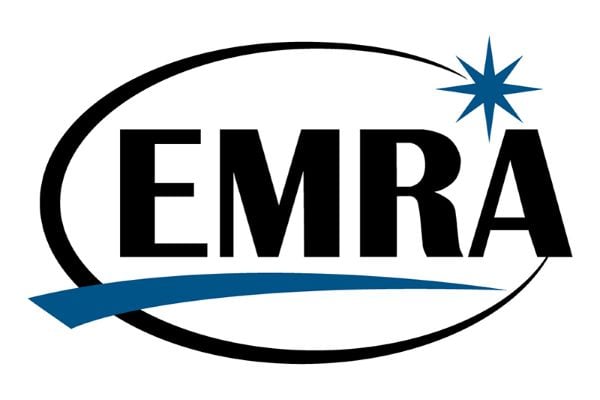Guidelines For Writing A Resolution
Every couple of months, you may see an advertisement in EM Resident or on the EMRA website stating something like “Call for Resolutions.” What’s that all about? Well, resolutions are what keep EMRA going and they come from you.
One of the most unique and powerful privileges of membership in the EMRA is participating in the policymaking process. Policies set at our bi-annual Representative Council Meetings help set the agenda for EMRA, giving guidance on projects to pursue, products to develop, and issues to influence.
1. What’s a resolution?
A resolution is a directive for EMRA to take a certain action or to form policy. Resolutions can be written by any EMRA member on any topic they feel is relevant to emergency medicine residents or the field of emergency medicine. They can be submitted by individual members, residencies or states. They assist the organization in addressing the needs of its members by directing our attention to particular areas of interest.
A resolution consists of at least one directive ("Resolved clause") accompanied by supporting statements or facts ("Whereas clauses"). Once a resolution is submitted to the EMRA, It is debated by the EMRA Representative Council (Rep Council). If passed by the Rep Council, the resolution becomes a binding call to action.
2. How to write a resolution
The basic elements of a resolution include:
- Title
- Author(s)
- Whereas clauses
- Resolved clauses
- References
- Relevant EMRA Policy
- Fiscal note
The Title should succinctly state the main issue addressed by the resolution.
The Authors should include the primary author or sponsoring society first, followed by co-authors (co-sponsors). If multiple authors are listed, they should all be prepared to discuss the resolution at the meeting
The Whereas clauses should paint a picture of why the topic should be addressed by EMRA. Whereas clauses will not be voted upon. Instead, they offer an explanation and the rationale of the resolution.
Whereas clauses can describe the problem that the Resolved clause is intended to address, explain how the Resolved clause will correct the problem, or otherwise defend or support the Resolved clause in any other way.
- Whereas clauses should flow in a logical order.
- Statements of fact should be cited with the appropriate reference.
The Resolved clauses will become EMRA policy, and are the most important part of the resolution. The resolved clause can be instructing EMRA to do something or it can just state a new policy or belief of the organization. You can have however many you want in the same resolution. These clauses will be debated on the Representative Council floor. If passed, the resolved clause will become EMRA “law.”
- Each Resolved clause must contain an actionable request and makes sense when read alone, since the Resolved clause represents the policy that will be adopted.
- If you want EMRA and another organization or association (i.e. ACEP, AMA-RFS) to take action, you need a Resolved clause for each.
- Resolved clauses should be stated in the affirmative, since the negative form is often confusing.
Please include any relevant References used in your resolution. Try to find relevant statistics, analyses, surveys, commentaries, etc. both for and against your resolution. This information will be used to develop your Whereas clauses, and will guide the defense of your resolution during debate at the Rep Council meeting
In addition if you know of Relevant EMRA Policy, please you include it in your resolution. Otherwise the EMRA Speaker will review the EMRA Policy Compendium, EMRA Representative Council Procedures and EMRA Bylaws for present EMRA policy. If no policy exists, that will be stated.
The Fiscal Note will be estimated by the EMRA Council Speaker or Staff and inserted into the resolution.
3. I wrote my resolution! Now what?
Submit your resolution by the determined deadline to the EMRA Speaker or the EMRA Central Office.
4. What if I missed the resolution deadline?
All resolutions must be submitted by a deadline determined by the EMRA Representative Council Procedures. This deadline is announced well in advance of the meeting and is usually 45 days before the upcoming Representative Council meeting.
Resolutions submitted after this date will be considered as a late or emergency resolution depending on when they are submitted. They will require an additional vote to be considered by the Representative Council.
5. What happens after submission?
Once submitted, resolutions are publicized online for all members to view. A day prior to the Representative Council meeting, the resolutions are forwarded to the reference committee to be discussed at the Reference Committee Public Hearing. Members of the reference committee hear testimony on each resolution in an open and informal debate. The author is encouraged to attend the public hearing to answer any questions attendants may have. Afterwards, the reference committee formulates a summary of the testimony heard and makes recommendations for Representative Council action.
The next day at the Representative Council meeting, the reference committee will present their recommendations. The author and other members are again given the opportunity to speak for or against the resolution. The Representative Council may vote to adopt the resolution, adopt as amended, not adopt, or refer to the EMRA Board, a committee, or task force.
6. Where Can I go for Help?
You can view a sample resolution and submit your resolution online on our resolution submission webpage.
The EMRA Council Officers, BOD, and regional representatives are available year-round to help develop your resolution idea.
Get Involved and Make a Difference!
Whatever the outcome, authoring a resolution can be a wonderful way to get involved in EMRA. It’s a great way to ensure EMRA is receptive to the needs of its members by bringing awareness to an issue that demands attention from the organization. If you are interested in writing a resolution, it’s not a tedious task. Contact your Council Officers at speaker@emra.org or vicespeaker@emra.org, if you need help.
References
- Adapted from the AMA-RFS Guidelines For Writing A Resolution





